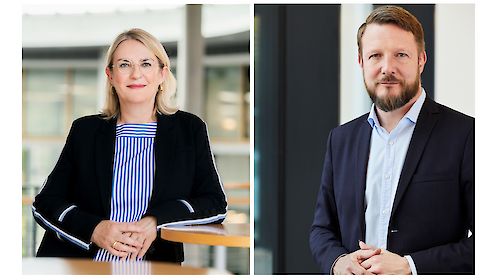GCB Marketing Strategy 2023+: Embracing a Fluid Future
 © iStock.com / Anawt Sudchanham
© iStock.com / Anawt Sudchanham
The world we live in is increasingly fluid and complex. This requires businesses to adapt to circumstances that might seem challenging at first but do, in fact, provide many opportunities to evolve and grow. At the GCB, we have therefore headlined our marketing strategy for 2023 and beyond with “Embracing a fluid future”. We focus on an anti-cyclical, evidence-based marketing approach that places customer needs at the core while considering the diversity of these needs and tailored range of services it requires.
Complex Challenges Change Customer Requirements
More than ever in our lifetime, the recent years have shown us how change impacts on customer demand in the events industry. Environmental concerns affect business travel, global events can make it impossible for people to attend meetings and conferences and the Covid-19 pandemic has made attendees more sensitive to specific safety and hygiene measures being adhered to. Such changes in behaviour need to be addressed by our industry as a whole, with agility and innovative ideas. Against this background, we see our “GCB Marketing Strategy 2023+” very much as an invitation to all stakeholders in Germany to take a multidimensional approach to business events of the future and to align their own offerings accordingly.
 © GCB
© GCB
Giving Our Future a Face
To that end, the trend scenarios we have developed within the Future Meeting Space Innovation Network can serve as a valuable strategic basis. Our three scenarios – Tried and Trusted: Renaissance of the Real, Diverse and Flexible: The Global Community and Green and Aware: the Net Zero Society – give our multidimensional future a face, enabling us to develop the event venues, formats, technologies as well as skills needed to address target groups as best as possible. Ultimately, when preparing for the different scenarios of the future, which will in all likelihood be a “mix & match” of all three models we have developed, the stakeholders in our business events community will need to diversify portfolios while having a very clear idea of what to focus on. At the same time, flexibility and openness to potential alternatives based on developments are key.
GCB Marketing Initiatives Addressing Key Future MICE Issues
The GCB’s marketing strategy is built around these requirements and offers specific services, tools, and measures to enable our partners and accompany them on our way into a fluid, ever changing future. Apart from cross-media marketing campaigns as an essential part of our “Embracing a fluid future” strategy, we aim at providing spaces and platforms for our partners to engage, network, collaborate, learn, and develop. One example is our “Transforming Business Events” innovation workshop scheduled to premiere in 2023. The event will connect service providers in the German meetings and conference space with professionals and executives in the marketing and communication departments of leading companies and associations.
An initiative of particular strategic importance is the GCB’s Open Data project as it addresses key issues of future destination marketing with a view to international competitiveness. To ensure that all relevant MICE information, offers and services of a destination can be found at as many digital touchpoints as possible, the underlying data needs to be provided in a standardised way using a uniform mark-up language for machine-readability. Only then digital technologies, particularly AI, could be effectively used for marketing purposes in the future. To that end, we collaborate with the German National Tourist Board which is implementing the “Open Data in Tourism” project, with the aim of mapping Germany’s MICE offerings as extensively as possible in the form of open data and bundling them in a knowledge graph for better accessibility and searchability. Event planners will be involved from the start in developing our roadmap for the project to make sure that customer target groups are considered at an early stage – and in line with our core guideline of customer centricity.

 ©
© ©
© ©
© ©
©